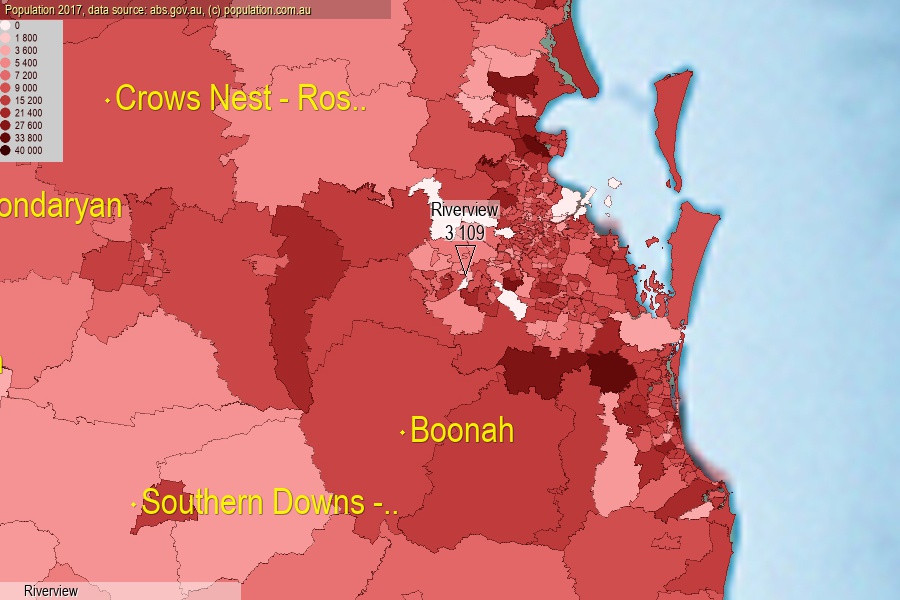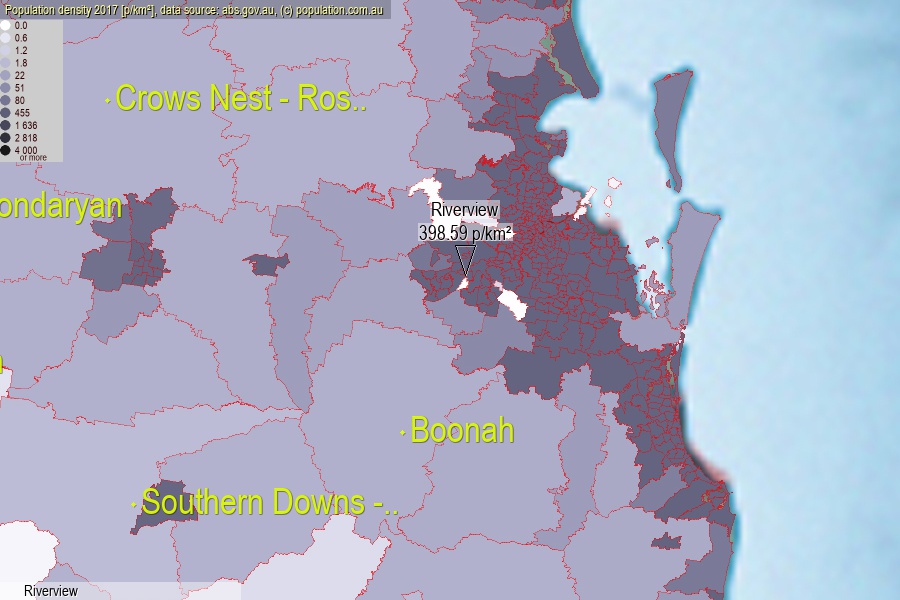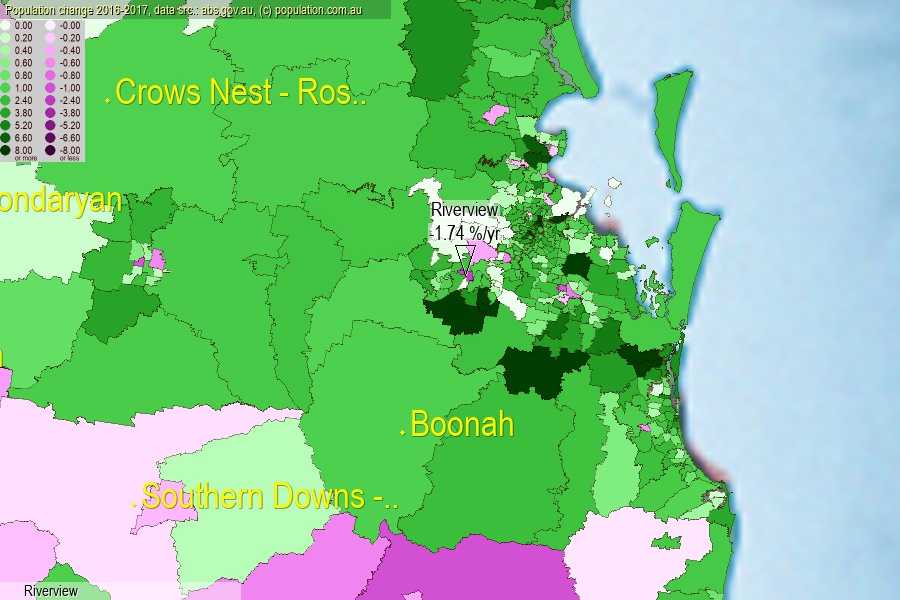 population.com.au
population.com.auLast official estimated population of Riverview (as Statistical Area Level 2) was 3 109 people (on 2017-06-30)[2]. This was 0.01% of total Australian population and 0.062% of QLD population. Area of Riverview is 7.80 km², in this year population density was 398.59 p/km² . If population growth rate would be same as in period 2016-2017 (-1.74%/yr), Riverview population in 2025 would be 2 702. [0]



Click to enlarge. Riverview is located in the center of the images.
Population [people], population density [p./km²] and population change [%/year] [2]
View borders » (new window) [4]
[1991-1992] -4.89 %/Yr.
[1992-1993] -3.60 %/Yr.
[1993-1994] -2.06 %/Yr.
[1994-1995] -0.66 %/Yr.
[1995-1996] -0.48 %/Yr.
[1996-1997] -2.82 %/Yr.
[1997-1998] -3.01 %/Yr.
[1998-1999] -3.13 %/Yr.
[1999-2000] -2.89 %/Yr.
[2000-2001] -2.73 %/Yr.
[2001-2002] +0.89 %/Yr.
[2002-2003] +0.34 %/Yr.
[2003-2004] +1.52 %/Yr.
[2004-2005] +1.08 %/Yr.
[2005-2006] +1.19 %/Yr.
[2006-2007] -0.50 %/Yr.
[2007-2008] -0.68 %/Yr.
[2008-2009] -0.56 %/Yr.
[2009-2010] +0.72 %/Yr.
[2010-2011] +1.10 %/Yr.
[2011-2012] -0.06 %/Yr.
[2012-2013] -0.65 %/Yr.
[2013-2014] -1.15 %/Yr.
[2014-2015] -1.91 %/Yr.
[2015-2016] -3.60 %/Yr.
[2016-2017] -1.74 %/Yr.
[0] Calculated with linear interpolation from officially estimated population
[1] Read more about SA2 and Australian Statistical Geography Standard (ASGS) on abs.gov.au
[2] Population data from Australian Bureau of Statistics (Population and density: 2017; change: 2016-2017)
[3] Digital Boundaries: Australian Statistical Geography Standard (ASGS) 2016.
[4] Border coordinates are simplifyed using Ramer-Douglas-Peucker algorithm.